Scarring can leave behind a visible reminder of injuries or surgeries that some may wish to diminish. If you’re one such individual searching for a natural alternative to traditional methods, then you’ve stumbled upon something remarkable – Vitamin E for scars. In this article, we’ll explore how this nutrient stands out among others as a trusted partner in reducing scar visibility. Prepare yourself to learn everything there is to know about Vitamin E for scars and how it can revolutionize the way you treat wounds.
1. Understanding Vitamin E
Exploring the benefits and uses of Vitamin E reveals its diverse roles, from its antioxidant properties to its potential in wound healing and scar reduction. Is vitamin E good for scars? We address this common question by exploring natural remedies and scientific insights.
1.1 What Is Vitamin E?
Vitamin E is a vital nutrient, known primarily for its role as an antioxidant. It’s a collective term for a set of fat-soluble compounds with distinct antioxidant abilities. These antioxidants are crucial in protecting cells from the harmful effects of free radicals. Free radicals are unstable molecules that can damage cells, potentially leading to cardiovascular diseases and cancer.
Naturally occurring in various foods, vitamin E is most abundant in nuts, spinach, whole grains, olive oil, and sunflower oil. In addition to its natural presence in these foods, it’s also added to some products by manufacturers. Beyond dietary sources, vitamin E is available as a supplement such as vitamin E oil for scars, vitamin E cream for scars, and vitamin E lotion for scars.

1.2 Antioxidant Properties of Vitamin E and Wound Healing
Vitamin E plays a significant role in cellular functions, impacting cellular signaling and gene expression. It’s particularly noteworthy in its interaction with wounds, especially those infected with methicillin-resistant Staphylococcus aureus (MRSA). By acting as an antioxidant, it affects the connective tissue growth factor, MRSA, and gene transcription, thereby influencing wound healing processes.
However, it’s important to note that the benefits of vitamin E in wound healing are not definitively proven. While some studies indicate potential positive effects, others suggest that vitamin E might not significantly enhance wound healing. In some cases, it can even lead to adverse reactions like contact dermatitis.
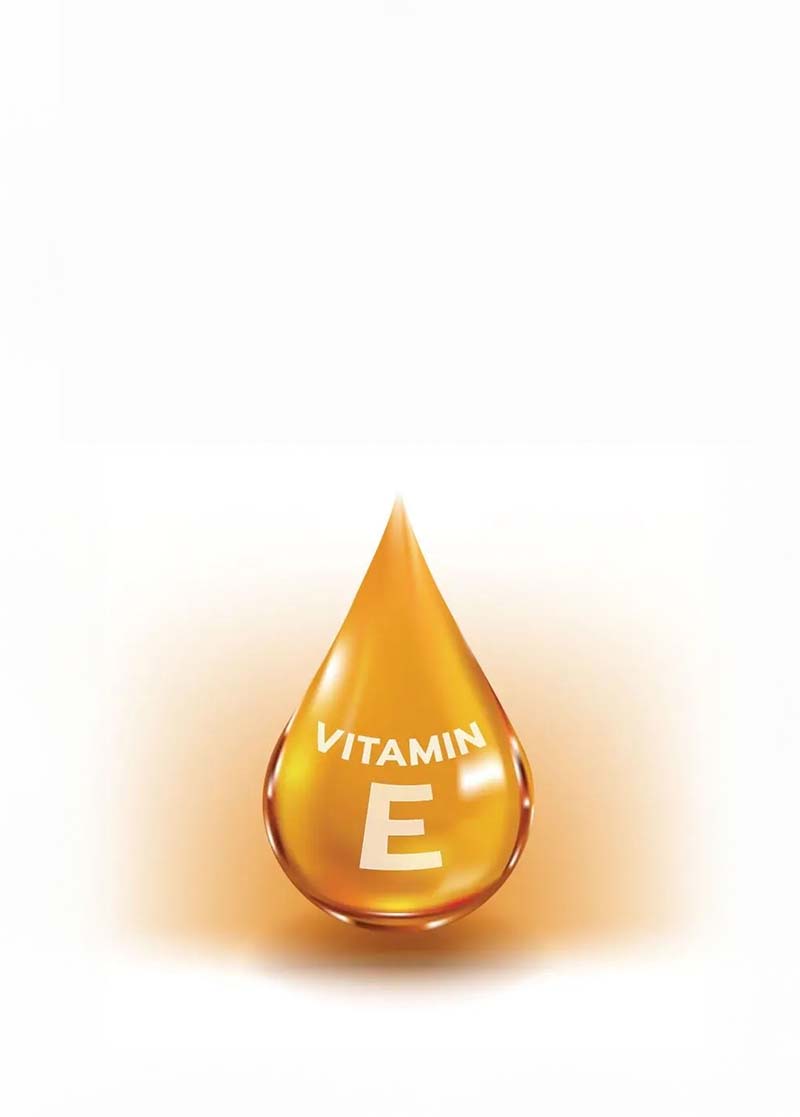
1.3 Vitamin E Formulations with Complementary Ingredients
Vitamin E is often combined with other ingredients to potentially enhance its effectiveness, especially in reducing the appearance of scars. These combinations might include:
- Hydrocortisone, a steroid that reduces inflammation
- Silicone sheets that help retain moisture and collagen in the healing area
- A blend of hydrocortisone and silicone sheets
- Silicone mixed with collodion, a syrup-like solution
- Retinoids, commonly used for acne scars
- Vitamin C
However, the scientific backing for the effectiveness of these combination therapies remains limited. Clinical studies have yet to confirm the benefits of using vitamin E, whether alone or in conjunction with other ingredients, for scar healing.
2. Vitamin E and Scars
Vitamin E’s potential in scar management is a subject of ongoing research, highlighting its use in prevention and treatment, but also underscoring the need for caution and further evidence.
2.1 Can I Use Vitamin E to Treat Scars?
Vitamin E is often considered a go-to remedy for treating scars, but its effectiveness varies. While there’s a belief that applying vitamin E topically before scar tissue forms can help reduce scarring, there’s no solid proof that it’s effective on already formed scars. Furthermore, excessive use of vitamin E on the skin can lead to inflammation, allergies, and its impact on scar reduction is uncertain and may depend on the scar’s location. Particularly for acne, applying vitamin E hasn’t shown significant benefits and might even worsen it due to its oily nature.
It’s crucial to weigh the effectiveness and potential risks before using any topical product for scars or acne. On the other hand, vitamin E is an essential nutrient beneficial for overall skin health, especially for those with severely damaged skin, and it also aids in disease prevention. As an antioxidant, it protects body tissues from free radicals that can accelerate aging. It also plays a role in forming red blood cells, vital for oxygen distribution in the body.
Ideally, obtaining vitamin E from dietary sources is best. It’s found in foods like nuts, green vegetables, and sprouted seeds.
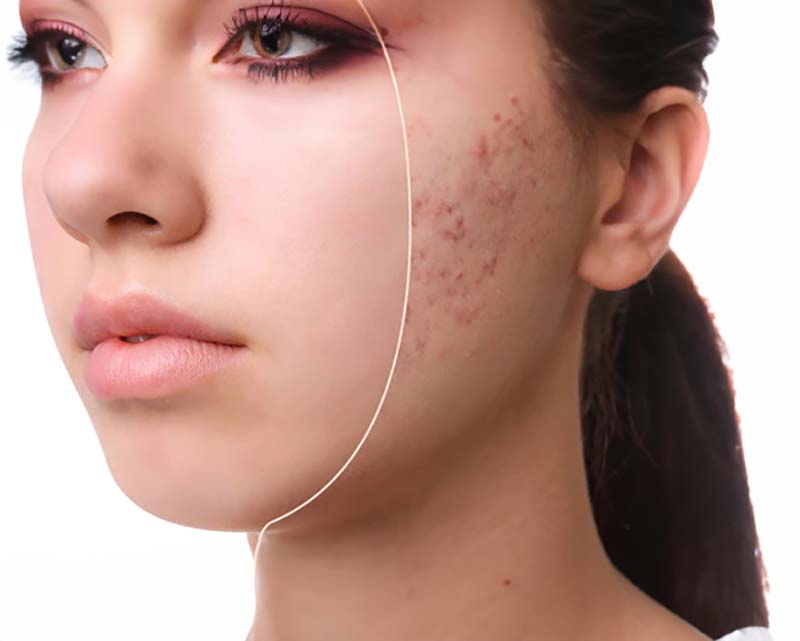
2.2 Vitamin E for Keloid Scars
Keloid scars are thick, raised scars that are notoriously difficult to treat. Some people believe that vitamin E oil can reduce the appearance of keloid scars. However, much like with other types of scars, there’s a lack of clinical evidence supporting its effectiveness for keloids.
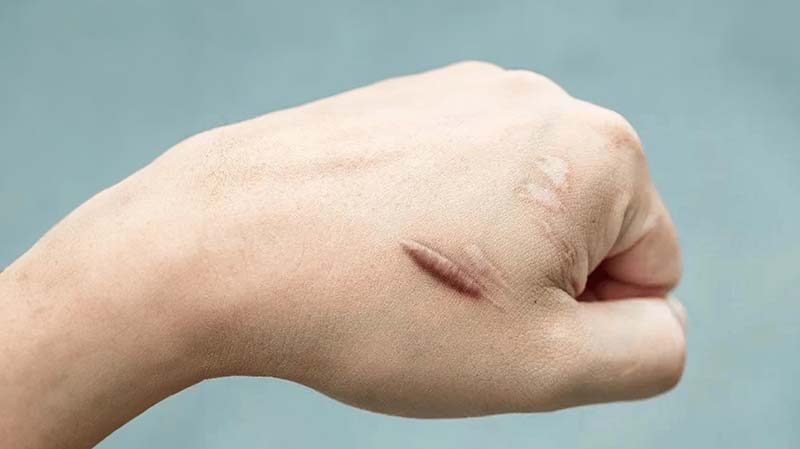
2.3 Vitamin E for Scar Prevention
The role of vitamin E in scar healing is more promising when used immediately after surgery, before the development of scar tissue. Some older studies suggest that vitamin E can aid in wound healing, potentially preventing the formation of keloid scars. This suggests that vitamin E might be more effective as a preventative measure rather than a treatment for existing scars.
Note: For anyone considering using vitamin E for scars, especially post-surgery, it’s advisable to consult with a healthcare professional first. Their guidance can help in determining the suitability of vitamin E for your specific skin type and condition, ensuring safe and effective use.
3. How to Use Vitamin E for Scars
When dealing with deep wounds in the dermis layer, scars are a common outcome after healing. Scars, especially on the face, can be a source of discomfort and self-consciousness. Facial scars vary in their causes, including trauma, acne, burns, or surgical procedures. Due to the facial skin’s constant exposure, healing scars here can be more challenging. Here are some methods to consider for scar treatment:
Home Remedies for Scars
Utilizing home remedies is often seen as the most accessible and least invasive approach for facial scar treatment. Options like mineral oil, bleaching agents, and honey are popular.
- Pros: Simple to use, typically low-cost, and easily obtainable.
- Cons: Limited effectiveness in scar treatment and potential risk of skin irritation.
Dermabrasion
Dermabrasion is a well-known and effective technique for addressing facial scars. It involves the removal of the top layers of skin using a specialized device.
- Pros: Often results in at least 50% less visible scarring.
- Cons: Can be painful, not suitable for sensitive skin or immune disorders, and may lead to complications like infection, skin darkening, redness, swelling, and uneven skin tone.
Chemical Exfoliation
Chemical exfoliants use mild acids to remove the top layer of dead skin. There are three types: deep peels (most effective for scars), light peels (milder effect), and medium peels (often used for anti-aging).
- Pros: Widely available, can address other skin issues, and promote smoother, younger-looking skin.
- Cons: Increases sun sensitivity, may irritate sensitive skin, not recommended for pregnant or lactating women, less effective for darker skin tones.
Laser Resurfacing
Laser resurfacing, similar to dermabrasion and chemical peels, removes the top skin layer using a high-powered laser.
- Pros: Quicker visible results (3 to 10 days).
- Cons: Not suitable for active acne, less effective for darker skin, risk of infection, pigmentation changes, and potential scarring.
Plastic Surgery
Plastic surgery is a more invasive option, involving the removal or alteration of scar tissue.
- Pros: Often yields better results than other treatments.
- Cons: Higher cost, more complex procedure, increased risk of infection and scarring.
Note: When considering scar treatment, it’s crucial to consult with a dermatologist to evaluate the best option based on your specific scar condition and skin type. Additionally, always consider your skin’s sensitivity and potential allergic reactions when choosing a treatment method.
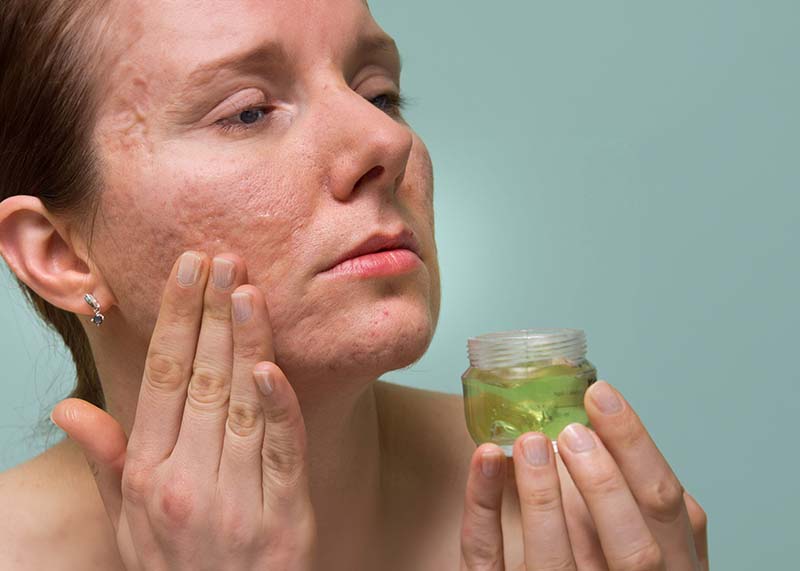
4. Alternative Methods for Scar Treatment
Exploring the realm of scar treatment reveals a variety of options beyond vitamin E, each with its own methodology and potential effectiveness, from silicone sheets and massage to innovative techniques like dermarolling and laser therapy.
4.1 Effective Techniques for Scar Healing
Beyond vitamin E, several other methods can effectively reduce the appearance of scars:
Silicone Sheets
Silicone sheets, which are hydrogel or silicone gel dressings, are soft, flexible, and self-adhesive. They can be applied directly over scars to flatten and soften them. Silicone works by hydrating scar tissue and limiting collagen fiber production, leading to scars that are flatter, softer, and paler than they might otherwise be. The National Health Service (NHS) in the UK recommends using silicone sheets for at least 12 hours daily for a minimum of three months.
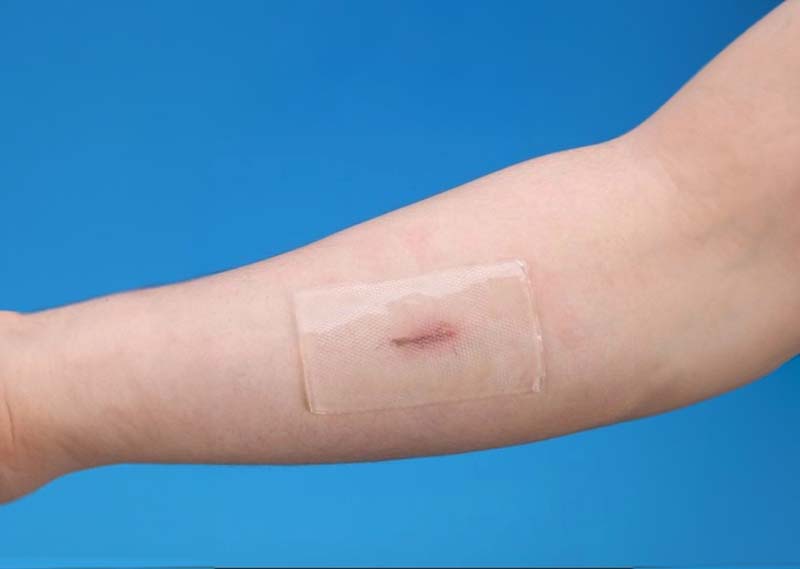
Massage
Scar massage is a widely used technique for managing scars. Endorsed by the British Skin Foundation, massage can help reduce pain, itching, and sensitivity, and may also soften scars. For mature scars larger than 10 centimeters squared, it’s advised to massage the area for 5 minutes, three to four times a day. Consulting a scar specialist can provide guidance on the most effective massage techniques for specific scars.
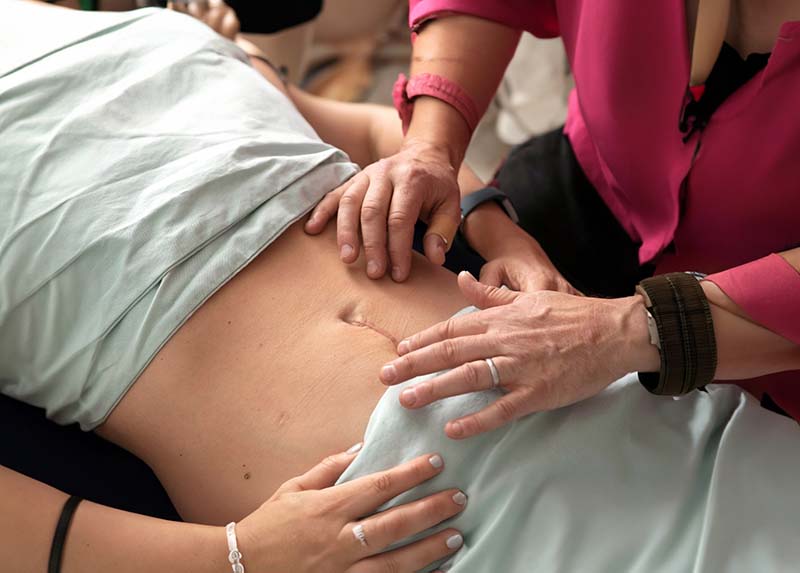
Dermarolling
Dermarolling, or microneedling, involves using a device with tiny needles to puncture the skin lightly. This process is believed to stimulate the skin’s natural healing, potentially improving scar appearance. A 2014 clinical trial noted significant improvements in acne scars following three dermarolling sessions, with minimal reported pain. Dermatologists often administer dermarolling treatments.
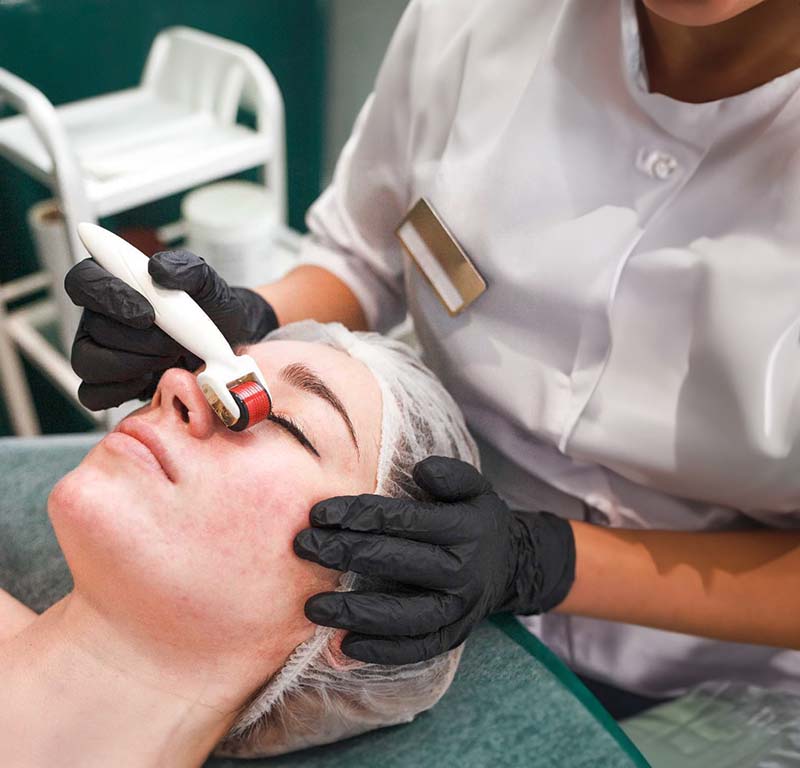
4.2 Other Methods to Treat Scars
Several other procedures can also help in reducing scars:
Laser Therapy
This method uses light to target blood vessels in the scar, potentially reducing inflammation. It might also stimulate collagen production and lessen pitting. However, the long-term effectiveness of laser therapy for scar treatment lacks extensive research.

Dermal Fillers
Dermal fillers are injectable treatments that plump the skin, diminishing the look of pitted scars. The effects of dermal fillers are temporary, so repeated treatments may be necessary.
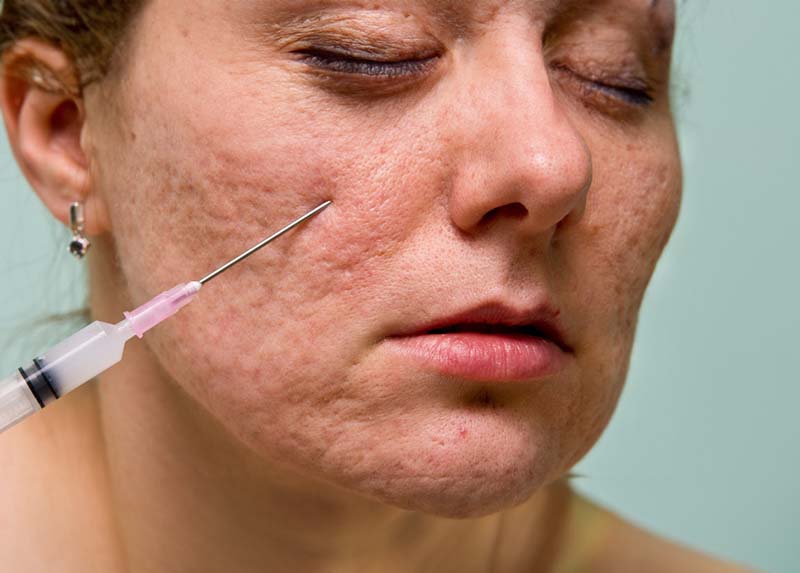
Cryotherapy
Cryotherapy involves freezing keloid scars to halt their growth and flatten them. Using liquid nitrogen, this therapy can also lighten the skin around the scar.
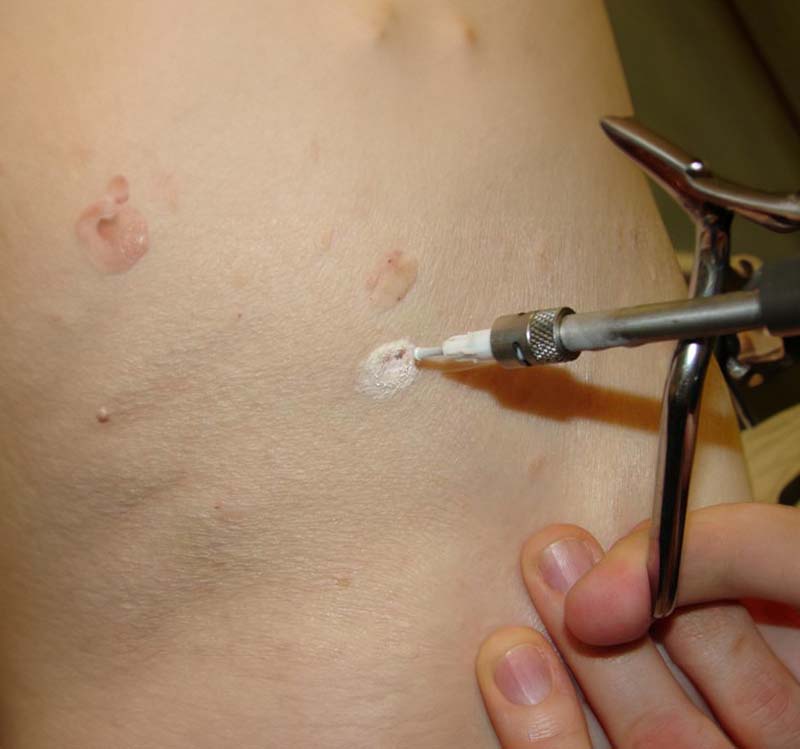
Note: When exploring these treatments, it’s important to consult with a dermatologist or healthcare professional. They can provide tailored advice and treatment options based on the type and severity of the scar, as well as skin type. Always consider the potential risks and benefits of each treatment option.
5. Where Else to Get Vitamin E
Vitamin E, essential for maintaining healthy skin and immune function, can be sourced naturally from various foods. Here’s a look at some of the richest natural sources of vitamin E:
5.1 Wheat Germ Oil
Wheat germ oil is an exceptionally rich source of vitamin E, offering about 20 milligrams per tablespoon, which is 135% of the daily value. Note that high-heat cooking may decrease its vitamin content.
5.2 Almonds
A small handful of almonds, roughly 23 nuts, provides 7.3 milligrams of vitamin E. This makes them not just a tasty snack but also a nutritious one.
5.3 Sunflower Seeds
With 7.4 milligrams of vitamin E per ounce, sunflower seeds cover about half of your daily vitamin E requirement. They’re a great addition to salads or as a snack.
5.4 Pine Nuts, Avocado, and Peanut Butter
These foods are also excellent sources of vitamin E. Avocados, in particular, are versatile and can be included in various dishes.
5.5 Fish
Certain fish types, like trout and salmon, offer a good amount of vitamin E, adding a healthy twist to your diet.
5.6 Vegetable Oils
Sunflower, safflower, and wheat germ oils are among the top sources of vitamin E. These oils can be used in salad dressings or light cooking.
5.7 Fortified Foods
Many everyday foods, such as breakfast cereals, fruit juices, and spreads, are fortified with vitamin E, making it easier to meet your daily intake requirements.
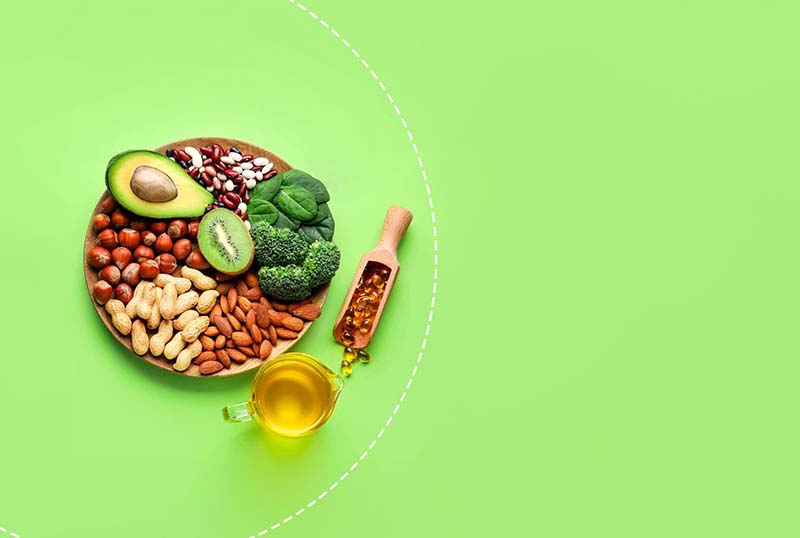
6. How Long Do Scars Take to Fade?
Scars, a natural part of the healing process, vary in their permanence and the time they take to fade. The duration for a scar to become less noticeable depends largely on the size and depth of the original injury.
The National Health Service (NHS) provides insights into this process. Fine-line scars, which might result from cuts or surgical incisions, can take up to two years to flatten and become less visible. Hypertrophic scars, which are raised and often red, may continue to thicken for up to six months and then gradually fade over the following years.
A study conducted in 2008, involving 103 volunteers, focused on the duration it takes for scar redness to diminish. Researchers observed that, on average, it took about seven months for the redness to fade significantly. It’s important to note that in individuals with darker skin tones, scars may appear red, violet, or dark brown, and the fading process may vary.
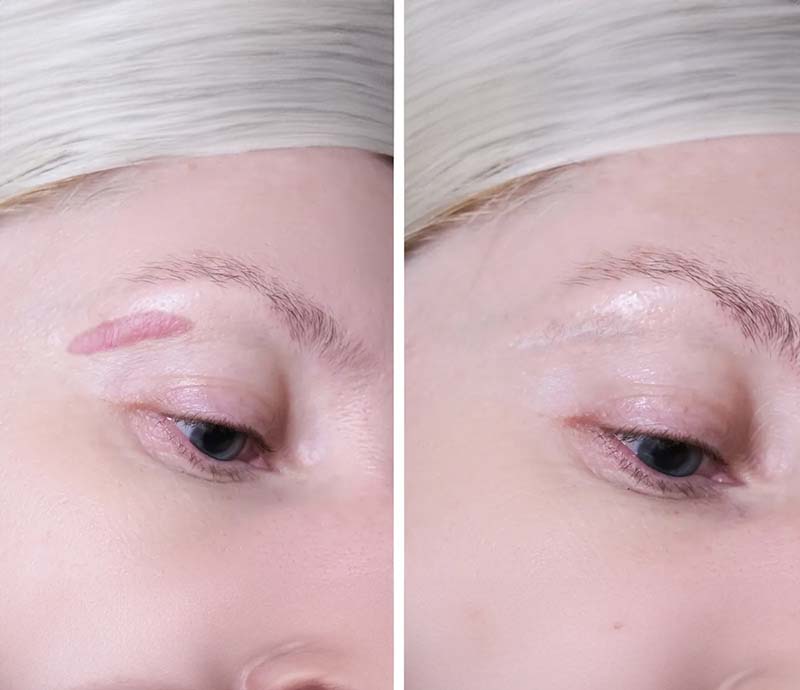
To conclude, while every person’s scar journey is unique, the significance of Vitamin E for scars continues to hold sway in the realm of wound healing. Sourced from natural products or supplements, Vitamin E plays a critical role in promoting healthy skin regeneration and minimizing scar formation. However, it’s essential to remember that the efficacy of Vitamin E for scars relies on multiple variables such as the type of scar and an individual’s skin specificities. At Biosculpture, we encourage our readers to share their personal experiences with Vitamin E for scars and contribute to an ongoing dialogue on healthcare. We believe that empowering individuals with knowledge and resources enables them to take control of their own health journeys.


